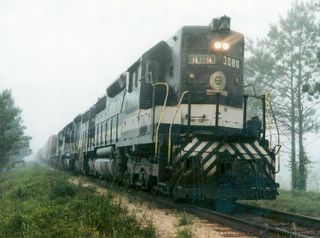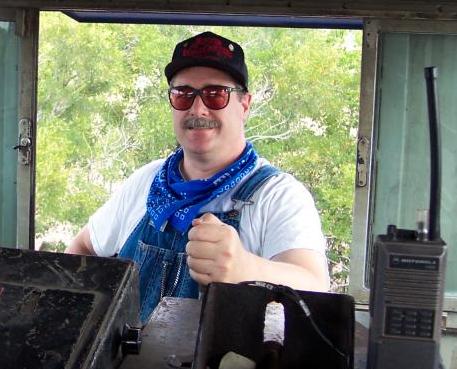
Here is a closer look at my power on the HNS. These three units are EMD SD35 2500 hp locomotives. "SD" stands for "special duty" and that means "through freight" duty. A 6-axle locomotive with the same horsepower as a 4-axle locomotive could out-pull the 4-axle engine because the horsepower was distributed to 6 axles instead of 4, and there was less likelihood of having wheel slip when pulling hard. If a wheel slips on the rail and then grabs before the engineer has time to reduce the throttle, the result can be a break-in-two due to a failed coupler. Our couplers (called knuckles) had a 50,000 pound test pull capacity. If you are pulling a 15,000 ton (30 million pounds) train, you have to be careful. This is like catching a 3600 pound fish on 6-pound test fishing line. You can do it, I suppose, if you pull gently enough. I am running short nose forward with this power, which means the engineer's control stand is on the left side of the engine facing forward (right side of the picture). All of the block signals from Houston to Addis (Baton Rouge) are on the right, but they are still easier to see running short nose forward than if I were running long nose forward as the Southern engineers did. The theory was that running long nose forward would protect you more in the event of a collision. I have seen that theory debunked on several occasions when the crew was crushed between the first and second units. I would rather see where I am going and take my chances. I would say the odds are of being in a severe collision are about the same as one would have in flying with a commercial airline. Now, what pilot would want to fly a plane backwards just on the possibility that he might crash, and that his chances of survival might be higher if the plane hits tail first? Your honor, the defense rests.


0 Comments:
Post a Comment
<< Home